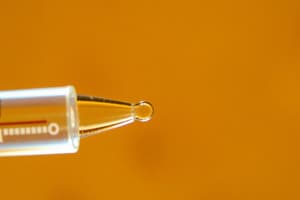Podcast
Questions and Answers
What is the purpose of making a series of dilutions in bacterial estimation?
What is the purpose of making a series of dilutions in bacterial estimation?
To readily estimate the number of bacteria in the original sample.
What is the best range for plate counts in terms of colony-forming units?
What is the best range for plate counts in terms of colony-forming units?
- 300 to 500
- 150 to 200
- 10 to 100
- 25 to 250 (correct)
What methods are used for plate counts?
What methods are used for plate counts?
Spread plate or pour plate methods.
Serial dilutions involve mixing one part of a solution with nine parts of water.
Serial dilutions involve mixing one part of a solution with nine parts of water.
What is a disadvantage of the pour plate method?
What is a disadvantage of the pour plate method?
How does the filtration method work for measuring bacteria?
How does the filtration method work for measuring bacteria?
What does the MPN method stand for?
What does the MPN method stand for?
What can direct microscope counts not determine?
What can direct microscope counts not determine?
What is turbidity in the context of estimating bacterial numbers?
What is turbidity in the context of estimating bacterial numbers?
What does metabolic activity measure in estimating bacterial numbers?
What does metabolic activity measure in estimating bacterial numbers?
How is dry weight used in estimating bacterial numbers?
How is dry weight used in estimating bacterial numbers?
What are the physical requirements for microbial growth?
What are the physical requirements for microbial growth?
Which of the following are major temperature ranges for microorganisms?
Which of the following are major temperature ranges for microorganisms?
What are psychrophiles?
What are psychrophiles?
What are mesophiles?
What are mesophiles?
What are thermophiles?
What are thermophiles?
What does maximum growth temperature refer to?
What does maximum growth temperature refer to?
What is the optimum growth temperature?
What is the optimum growth temperature?
What is the minimum growth temperature?
What is the minimum growth temperature?
What are psychotrophs?
What are psychotrophs?
Why should food be refrigerated?
Why should food be refrigerated?
What are hyperthermophiles?
What are hyperthermophiles?
What pH do bacteria typically grow in?
What pH do bacteria typically grow in?
What are acidophiles?
What are acidophiles?
How do most microorganisms obtain all their nutrients?
How do most microorganisms obtain all their nutrients?
What effect does high osmotic pressure have on bacteria?
What effect does high osmotic pressure have on bacteria?
What is plasmolysis?
What is plasmolysis?
What are extreme halophiles?
What are extreme halophiles?
What are obligate halophiles?
What are obligate halophiles?
What are facultative halophiles?
What are facultative halophiles?
What is a typical medium composed of?
What is a typical medium composed of?
What are the chemical requirements of microbial growth?
What are the chemical requirements of microbial growth?
Why is carbon important for microbial growth?
Why is carbon important for microbial growth?
What are chemoheterotrophs?
What are chemoheterotrophs?
What is nitrogen used for in microbial growth?
What is nitrogen used for in microbial growth?
What is nitrogen fixation?
What is nitrogen fixation?
What is the source of sulfur needed by microorganisms?
What is the source of sulfur needed by microorganisms?
What is the source of phosphorus for microbes?
What is the source of phosphorus for microbes?
What are trace elements?
What are trace elements?
What is the role of oxygen in microbial growth?
What is the role of oxygen in microbial growth?
What are obligate aerobes?
What are obligate aerobes?
What are facultative anaerobes?
What are facultative anaerobes?
What are obligate anaerobes?
What are obligate anaerobes?
What are superoxide radicals?
What are superoxide radicals?
What is superoxide dismutase?
What is superoxide dismutase?
What is a biofilm?
What is a biofilm?
What is culture medium?
What is culture medium?
What is inoculation?
What is inoculation?
What must a culture contain to grow successfully?
What must a culture contain to grow successfully?
What is agar?
What is agar?
What is significant about agar for microbiological culture?
What is significant about agar for microbiological culture?
What are selective media?
What are selective media?
What are differential media?
What are differential media?
What is an enrichment culture?
What is an enrichment culture?
What is meant by obtaining pure cultures?
What is meant by obtaining pure cultures?
What does bacterial division refer to?
What does bacterial division refer to?
How do bacteria reproduce?
How do bacteria reproduce?
What is budding in bacteria?
What is budding in bacteria?
What is generation time?
What is generation time?
What is a bacterial growth curve?
What is a bacterial growth curve?
What are the four basic phases of microbial growth?
What are the four basic phases of microbial growth?
What occurs during the lag phase?
What occurs during the lag phase?
What happens during the log phase?
What happens during the log phase?
What is the stationary phase?
What is the stationary phase?
What occurs during the death phase?
What occurs during the death phase?
What are direct measurements of microbial growth?
What are direct measurements of microbial growth?
What is the main way of measuring microbial growth?
What is the main way of measuring microbial growth?
Flashcards are hidden until you start studying
Study Notes
Microbial Growth Requirements
- Physical factors influencing microbial growth: temperature, pH, osmotic pressure.
- Most microorganisms thrive at human-favorable temperatures, categorized into psychrophiles, mesophiles, and thermophiles.
Temperature Classes
- Psychrophiles: Cold-loving microbes, optimal growth at -10 to 20°C.
- Mesophiles: Moderate-temperature loving microbes, optimal growth at 10 to 50°C.
- Thermophiles: Heat-loving microbes, optimal growth at 40 to 73°C.
- Hyperthermophiles: Optimal growth temperature of 80°C or higher, typically found in hot springs.
Temperature Ranges
- Maximum: Highest temperature for microbial growth.
- Optimum: Temperature at which growth is maximized.
- Minimum: Lowest temperature for growth; typically, max and min temperatures are about 30°C apart.
pH Levels
- Most bacteria prefer neutral pH (6.5 to 7.5).
- Acidophiles thrive in acidic environments.
Nutrient Acquisition
- Microorganisms require water to obtain nutrients dissolved in their surrounding environment.
- High osmotic pressure can result in plasmolysis, where cells lose water and shrink, affecting growth.
Salt Concentration Adaptations
- Extreme halophiles need high salt concentrations for growth.
- Obligate halophiles require salt, while facultative halophiles tolerate lower concentrations.
Culture Media Essentials
- Typical culture medium contains 1.5% agar and water.
- Nutrient media consist of carbon, nitrogen, sulfur, phosphorus, trace elements, and oxygen.
Sustainability of Microbial Life
- Carbon is a structural backbone of living matter, essential for all organic compounds.
- Nitrogen fixation allows the conversion of atmospheric nitrogen for incorporation into biological molecules.
Oxygen's Role and Effects
- Oxygen is necessary for aerobic respiration but toxic to obligate anaerobes.
- Singlet oxygen and superoxide radicals are reactive and require neutralization by enzymes like superoxide dismutase.
Growth Phases and Measurement
- Bacterial growth occurs in four phases: lag, log, stationary, and death.
- Direct measurement methods include plate counts, serial dilutions, and direct microscopic counts.
- Plate counts are a common method for viable cell quantification but labor-intensive.
Preservation Techniques
- Short-term preservation via refrigeration.
- Long-term techniques include deep-freezing and lyophilization (freeze-drying), allowing cultures to be stored for years.
Growth Media Types
- Selective media suppress unwanted bacteria, while differential media differentiate between species.
- Enrichment cultures favor growth conditions for specific microbes, useful in low-abundance scenarios.
Biofilms and Their Importance
- Microbes often exist in biofilms, complex communities providing protection and enabling cooperative growth.
- Biofilms are heavily involved in human infections, primarily in devices like catheters and heart valves.
Methods for Culturing Bacteria
- Inoculation introduces microbes to culture medium.
- Streak plate method aids in obtaining pure cultures from mixed samples.
Specialized Growth Conditions
- Anaerobic chambers and reducing media deplete oxygen for anaerobic organisms.
- Carbon dioxide incubators maintain specific CO2 levels for capnophiles, which prefer higher concentrations.
Applications for Growth Media
- Complex media provide varied nutrients; chemically defined media offer known compositions.
- Assays help determine specific nutritional requirements through controlled growth experiments.### Bacteria in Milk
- Viewing bacteria under an oil immersion lens allows for detailed observation of microbial structures.
- Bacteria can be counted in multiple fields of view, providing an average number of cells per viewing field.
- The Petroff-Hausser cell counter is a specific device used for counting bacterial cells.
- Live bacteria cannot be counted; dead cells are often counted, requiring a concentration of approximately 10 million cells per milliliter for accuracy.
- Advantage of this method: it does not require incubation time.
Estimating Bacterial Numbers Using Indirect Methods
- Common indirect estimation methods include turbidity, metabolic activity, and dry weight.
Turbidity
- Bacterial growth causes the medium to become cloudy, indicating an increase in cell numbers.
- As the bacterial population increases, light transmission decreases, leading to higher absorbance.
- A spectrophotometer is used to measure turbidity; a million cells per milliliter need to be present for initial turbidity detection.
- This method is ineffective for counting small bacterial populations.
Metabolic Activity
- This approach assumes a direct correlation between the amount of metabolic byproducts (e.g., acids, CO2) and the bacterial population present.
Dry Weight
- For filamentous fungi and molds, traditional measuring methods may be inadequate.
- Samples are removed from growth media, filtered to eliminate excess material, and dried before being weighed.
- A desiccator is typically used for the drying process.
Studying That Suits You
Use AI to generate personalized quizzes and flashcards to suit your learning preferences.




